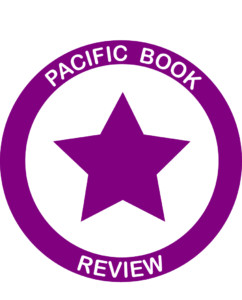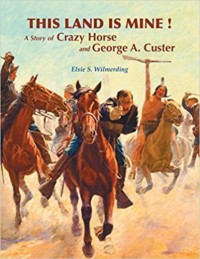Title: This Land Is Mine!: A Story of Crazy Horse and George A. Custer
Author: Elsie S. Wilmerding
Publisher: Book Venture Publishing LLC
ISBN: 978-1-64069-873-4
Pages: 163
Genre: Historical Fiction
Reviewed By: Susan Brown
Pacific Book Review Star
Awarded to Books of Excellent Merit

The Battle of the Little Big Horn, also referred to as Custer’s Last Stand, is a definitive part of U.S. history, marking the clash between the Plains Indians and the U.S. Army at a time of the country’s western expansion. It was a watershed moment that perpetuated a land grab by the Army and settlers looking to capitalize on the rich resources of the land west of the Mississippi. While This Land Is Mine!: A Story of Crazy Horse and George A. Custer details much of that western migration and the effects it had on the Native Americans whose land was being intruded upon, the heart of the story is about the lives of two leaders, one American and one Native — General George Armstrong Custer and Crazy Horse of the Lakota tribe.
Author Wilmerding’s style of writing, one with a creative nonfiction inclination, is a blend of historical facts and some conjecture based on those facts. Certain truths are unequivocal. The settling of the West changed Native American societies and, though, Ms. Wilmerding addresses these changes, the more intriguing aspect to the book is the narrative she weaves about the lives of Crazy Horse and Custer leading up to their fateful meeting. Her technique tells their story in parallel, giving the reader details about each of them in alternating chapters.
There’s a comprehensive timeline at the beginning of this book that lays out the highlights of these two intertwining lives, from their birth only two years apart to their deaths only months apart. Of particular note is that these two men share many similarities. Both had active childhoods, one playing with friends and learning how to hunt buffalo, capture horses and understand Native culture, the other leading a comparable carefree childhood two-thousand miles away, steeped in early-American life. Both, on different paths, were on a trajectory to leadership.
One of the joys of this book is the conjecture and postulation that Ms. Wilmerding interweaves into this chronicle. We don’t know that as a young brave, Crazy Horse, learning to hunt with a bow and arrow would feel his “heart pound with excitement” or that at the celebration prior to a buffalo hunt he would sit in the tipi and “close his eyes, feeling the air around him swollen with music.” It’s also hard to know if indeed Custer, when asked in school to spell the word Missouri, “furrows his brow and paces the length of the classroom. His arms are folded across his chest,” or that while taking the test to become a cadet at West Point, “the knot in his stomach dissolves, he breathes easily. Answers flow in clear handwriting.”
What we do know is that the author thoroughly researched photographs, letters and artwork to paint a picture for the reader of the characters’ personalities and culture. This writing technique is just so engaging, filling in the gaps that our imaginations can only wonder about. By the end of the book, I truly felt I knew who both of these characters were and what drove them to their historic battle at Little Big Horn.
If you love history, This Land Is Mine!, A Story of Crazy Horse and George A. Custer will immerse you in that time period in a way that brings it to life, profiling two courageous leaders who were each fighting for the land they believed was theirs.



Follow Us